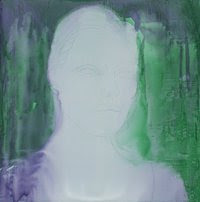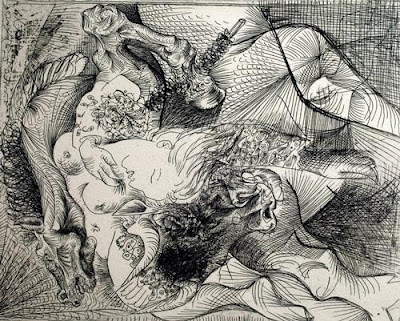ID - Entity. Nicola Mette
curated by Roberta Vanali
European Patent Office - L’Aia (Paesi Bassi)
The Hague | Foyer of the Main Building
Exhibition from The 4th until the 20th of May 2011
Io non sarò mai nessuno, ma nessuno sarà mai come me.
(Jim Morrison)
Risultato di un compromesso tra differenze fisiche, culturali e caratteriali che concorre a fare di ogni individuo un essere assolutamente unico, l’identità è sinonimo di distinzione quanto di appartenenza. E’ l’insieme di trasformazioni che articola il percorso esistenziale mantenendone i tratti distintivi. Ragion per cui ciascuno di noi è una moltitudine, e la ricerca della nostra identità è un tentativo destinato all’insuccesso, per parafrasare Galimberti. Poiché il processo di costruzione della personalità implica tutta una serie di fattori che vanno dal condizionamento dell’ambiente alle peculiarità fisiche e mentali, ma sopratutto si focalizza sulle reazioni psicologiche agli eventi e a ciò che inevitabilmente si ripercuote sulla nostra esistenza. Da questa riflessione origina l’analisi di Nicola Mette, dalla concezione dell’identità come entità effimera e instabile che si evolve, ora più che mai, in direzione caoticamente frammentaria e inconsistente.
ID Entity si configura come un’indagine sull’identità mutabile e transitoria nell’era della globalizzazione, epoca controversa di frammentazione sociale che si riflette in una scissione dell’identità personale, perdendo importanti punti di riferimento in quanto le appartenenze non sono certo scontate. Così l’identità dell’individuo si smembra, si mimetizza e irrimediabilmente si adatta diventando contingente. Nella società dell’incertezza, la cui perdita dei confini identitari catapulta l’individuo in una condizione liquida - per citare Bauman -, mediatore tra noi e il mondo esterno è il corpo, che acquisisce valenza di luogo dell’identità, teatro del vissuto che ingloba e stratifica esperienze, percezioni, emozioni, presenze. Ma è sopratutto il corpo esibito come feticcio - standardizzato e ingabbiato in banali stereotipi dettati da una società al limite della schizofrenia, che si trasfigura in una sorta di manichino - a sollecitare l’artista, dal momento che il potere si è addentrato nel corpo, esso si trova esposto nel corpo stesso, per dirla con Foucault.
Inserita in ambito neopop, tendenza influenzata dalla cultura globale che prevede la contaminazione e interazione di codici e linguaggi espressivi, quella di Nicola Mette è una pittura ibrida, veloce ma mai istintiva, calibrata nelle sgocciolature che vanno a sovrapporsi aprendo distese prospettiche, improvvisi varchi di luce, o a definire fitte texture che isolano entità fluttuanti profondamente ritagliate dal fondo. Inquietanti presenze che alludono alla statuaria classica per accostarsi grottescamente a un’idea di compiacimento estetico decadente. Un’ossessiva ricerca di perfezione formale definita da tratti somatici lineari, stilizzati, appena pronunciati che emergono a sottolineare la depersonalizzazione dell’individuo, la frattura tra vissuto e coscienza. Ritratti decontestualizzati come svuotamento dell’io che rimandano ad una dimensione sospesa e surreale. Nel contesto di una pittura liquida, al limite della dissoluzione per sottrazione cromatica, prendono forma volti incorporei, indefiniti, svuotati da ogni espressività per tradursi in sterili icone di una società alienata e sempre più vicina all’inverosimile. Presenze-assenze immobili e austere, estranee al mondo e al proprio essere. E inesorabilmente senza via d’uscita perché è scritta nel corpo la trama delle successive disavventure dell’anima. (U. Galimberti)
Roberta Vanali
I’ll never be anyone, but no-one will ever be like me.
(Jim Morrison)
The result of a compromise of physical, cultural and emotional differences, that compete to make every individual absolutely unique, identity is a synonym for distinction as much as belonging. It is a togetherness of transformations that define the existential course maintaining the distinctive images. It is the reason why “everyone of us is a multitude, and the search for our identity is doomed to failure” to paraphrase Galimberti. Because the process of the construction of a personality involves a series of factors that are conditioned by the environment and the physical and mental particularities , but above all focuses on the psychological reactions to events, and their inevitable repercussions to our own existence. . These reflections are the source of the analysis by Nicola Mette. From identity as an entity, both ephemeral and unstable that evolves, now more so than ever in the direction of chaos, fragmentation and inconsistency.
ID Entity is configured as an investigation into identity, changeable and transitory in the era of Globalisation and the controversial age of social fragmentation. This is reflected in a separation of the personal identity, and the loss of important points of reference in that the affiliations are certainly not ignored. In this way the identity is dismembered, camouflaged and irredeemably adapted to divergent contingencies. In the society of uncertainty those individuals who loose the limits of identity are catapulted into a fluid condition – to quote Bauman, - the mediator between us and the external world is the body, that acquires the value in place of the identity, a theatre of life that encompasses and stratifies experiences, perceptions, emotions and presences. But more than anything the body exhibits as a fetish – standardised and caged into banal stereotypes dictated by a society on the edge of schizophrenia. And that transform it into kind of manikin – that stimulates the artist, from the moment that “the power enters into the body, one finds oneself exposed within the body itself” to say it in the words of Foucault
Entering into the ambient of neopop, a tendency influenced by the global culture that anticipates the contamination and interaction of the codes and expressive languages, that of Nicola Mette is a hybrid painting, fast but never instinctive, gauged to every drop superimposed, which opens and spreads perspective, improvising lines of light. Or the drop defines a heavy texture that that isolates the entity fluctuating and cutting deeply to the background.
Disturbing presences that allude to statuesque classics to grotesquely approach a pleasing aesthetic decadence. An obsessive search for a formal perfection as defined by linear and somatic images, stylized and barely pronounced that emerge to underline the depersonalization of the individual, and the break between life and conscience. Images that decontextualize the emptiness of the self that is displaced to a surreal suspended dimension. And in the context of a painting, liquid to the limit of dissolution with the subtraction of colour, taking the form of disembodied faces, undefined, empty of any expressivity to translate into a sterile icon of an alienated society and ever closer to excess. A presence-absence immobile and austere, remote from the world and its own self. And inexorably without exit because it is written in the body the tissue of the successive misadventure of the soul. (U. Galimberti)
COORDINAMENTO E RELAZIONI ESTERNE: Stefano Votini
TESTI IN CATALOGO: Roberta Vanali, Daniele Fiacco, Saverio Ciancio
TRADUZIONI ITALIANO / INGLESE: Infolang School Roma
ALLESTIMENTI: Amicale the Hague
ORGANIZZAZIONE : Amicale the Hague
FOTOGRAFIE: Saverio Ciancio
CATALOGO: AMICALE THE HAGUE - EUROPEAN PATENT OFFICE
WEB: http://www.epo.org/










Commenti
Posta un commento